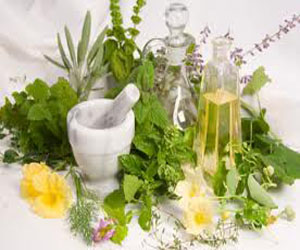


Decorating Your Herb Garden
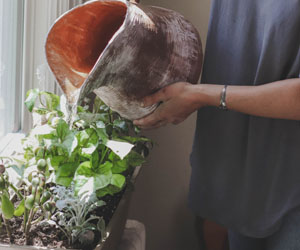
Herb gardens are not just about growing flavorful and aromatic plants; they can also be a visual delight that elevates the aesthetics of your outdoor or indoor space. Decorating your herb garden can create a serene and inviting atmosphere, making it an even more enjoyable place to spend time. In this article, we will explore creative ways to decorate your herb garden and add a touch of elegance to your green oasis.
Plant Grouping And Arrangement
The way you arrange and group your herbs can be a form of natural decoration. Consider the following techniques:
Color Coordination: Group herbs with similar-colored leaves, such as various shades of green or silver. For example, combine rosemary, lavender, and sage for a tranquil, monochromatic bed.
Herb Layers: Arrange herbs in tiers, with taller herbs at the back and shorter ones at the front. This layered effect adds depth and visual interest.
Symmetrical Or Geometric Layouts: Create symmetrical or geometric patterns in your garden, such as circular herb beds or rectangular planters. These structured designs can bring a sense of order and formality to your garden.
Herb Borders: Plant herbs along the edges of garden beds or walkways to define the space and create an organized, neat appearance.
Decorative Planters And Containers
Your choice of planters and containers can be a focal point in your herb garden:
Terracotta Pots: The rustic charm of terracotta pots adds a timeless elegance to your garden. Consider using pots of various sizes and shapes for a curated look.
Decorative Containers: Opt for unique and decorative containers like vintage crates, wooden barrels, or painted ceramics. These containers can be both functional and ornamental.
Hanging Baskets: Hang herbs in decorative baskets, allowing them to cascade gracefully. This not only saves space but also adds a touch of whimsy to your garden.
Vertical Planters: Vertical herb planters, such as living walls or pocket planters, are not only space-efficient but also create a captivating visual display.
Garden Decor And Art
Incorporating garden decor and art pieces can enhance the visual appeal of your herb garden:
Garden Statues: Statues, sculptures, or even ornamental birdbaths can be strategically placed to create a focal point or add a sense of character to your garden.
Garden Signs: Customize herb labels or garden signs with artistic fonts and designs. These signs serve a functional purpose while adding a touch of charm.
Garden Trellises: Installing trellises can provide support for climbing herbs like cucumbers or vining plants, adding both vertical dimension and visual interest to your garden.
Lighting: Outdoor lighting, such as string lights, lanterns, or solar-powered lamps, can extend your garden's visual appeal into the evening hours.
Furniture And Seating
Creating a comfortable seating area in your herb garden is a perfect way to enjoy your green haven:
Garden Benches: Place a garden bench or a couple of chairs where you can relax and immerse yourself in the serenity of your garden.
Pergolas Or Arbors: Structures like pergolas or arbors with climbing herbs can serve as shaded seating areas, providing an inviting and charming atmosphere.
Decorating your herb garden is an opportunity to infuse style, character, and elegance into your outdoor or indoor space. From the way you arrange your herbs to the choice of planters, decor, art, and seating, each element can contribute to the visual appeal of your garden. By incorporating creative and aesthetically pleasing touches, you can transform your herb garden into an enchanting and inviting retreat, creating an enjoyable atmosphere for both gardening and relaxation.
Crafting Your Way To Creativity And Fulfillment
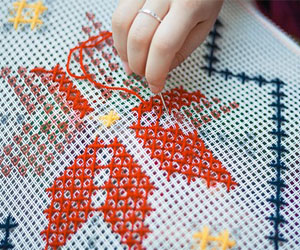 Skill Development: Handmade projects offer the opportunity to learn and develop new skills. Whether you're perfecting your knitting techniques, honing your woodworking abilities, or expanding your artistic talents, each project is a chance for growth and self-improvement.
Skill Development: Handmade projects offer the opportunity to learn and develop new skills. Whether you're perfecting your knitting techniques, honing your woodworking abilities, or expanding your artistic talents, each project is a chance for growth and self-improvement.
Sustainability: In an age of mass production and consumerism, handmade projects can be a sustainable choice. Crafting your own items reduces the need for disposable products and promotes a culture of reuse and sustainability.
Connection: Handmade projects often bring people together. Joining crafting communities, attending workshops, or collaborating on projects with friends or family can foster a sense of connection and shared creativity.
To get started with your own handmade projects, consider the following:
Choose Your Craft: Select a craft that interests you the most. Whether it's sewing, pottery, knitting, or any other craft, your passion will drive your creativity.
Gather Materials: Acquire the necessary materials and tools. Invest in quality materials to ensure a successful and rewarding crafting experience.
Start Simple: Begin with straightforward projects to build your confidence and skills. As you gain experience, you can take on more complex and intricate creations.


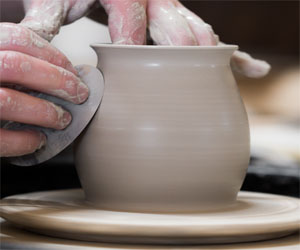
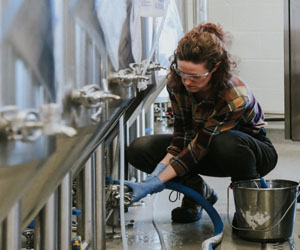
The Healing Power Of Creativity
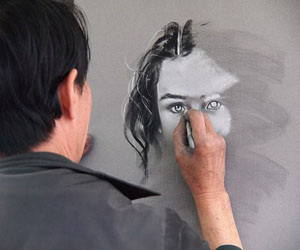 The Benefits Of Therapeutic Crafts
The Benefits Of Therapeutic Crafts
Stress Reduction: The act of creating something with your hands can be meditative in itself. Whether you're knitting, painting, or sculpting, the rhythmic and repetitive motions can help lower stress levels, ease tension, and promote relaxation.
Self-Expression: Therapeutic crafts offer a non-verbal means of self-expression. You can convey your emotions, thoughts, and feelings through your creative work, allowing for a deeper connection with yourself.
Sense Of Accomplishment: Completing a craft project, no matter how simple, can provide a sense of achievement and boost self-esteem. This can be particularly meaningful for those struggling with self-doubt or anxiety.
Social Connection: Many therapeutic crafts can also be social activities. Joining a knitting club, taking a pottery class, or participating in a painting workshop provides opportunities for social interaction and the building of supportive communities.
Emotional Release: Engaging in crafts can serve as a healthy outlet for pent-up emotions. The act of creating can be emotionally cathartic, allowing individuals to release and process feelings in a constructive manner.
Improved Concentration: Craft projects often require attention to detail, which can help improve focus and concentration. This can be especially beneficial for individuals with racing thoughts or attention-related challenges.
Crafting As A Form Of Therapy
Art therapists and mental health professionals often incorporate therapeutic crafts into their sessions. The process of creating art can help clients explore their emotions, build resilience, and develop coping mechanisms. It provides a safe space for self-expression and healing, particularly for those dealing with trauma, grief, or mental health issues.
Incorporating Therapeutic Crafts Into Daily Life
You don't need to be a professional artist to experience the benefits of therapeutic crafts. Anyone can incorporate creative activities into their daily life.
Crafting Creativity, Tradition, And Skill
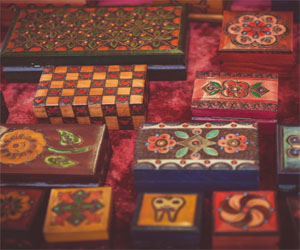 A Marriage Of Form And Function: At its core, woodworking combines form and function. Craftsmen and artisans meticulously design and create objects that are not only visually appealing but also serve practical purposes. From finely crafted tables and chairs to elegant cabinets, woodworking is a harmony of aesthetics and utility.
A Marriage Of Form And Function: At its core, woodworking combines form and function. Craftsmen and artisans meticulously design and create objects that are not only visually appealing but also serve practical purposes. From finely crafted tables and chairs to elegant cabinets, woodworking is a harmony of aesthetics and utility.
The Craftsmanship Ethic: Woodworking is synonymous with craftsmanship. The commitment to precision, attention to detail, and dedication to quality are the cornerstones of this craft. Artisans take pride in their ability to turn raw timber into exquisite creations, and the art of craftsmanship is passed down from one generation to the next.
Modern Technology Meets Tradition: The world of woodworking has evolved over time. While traditional hand tools and joinery techniques still hold a special place, modern technology has ushered in a new era of woodworking. Computer-aided design (CAD) and computer numerical control (CNC) machines have revolutionized the field, allowing for precise and intricate creations that were once challenging to achieve.
A Medium For Creativity: Woodworking is a canvas for creative expression. Artists and woodworkers find inspiration in the natural beauty of wood, its unique grains, and its warm tones. The process of envisioning a project and bringing it to life is a journey of self-expression, where each piece becomes a reflection of the creator's imagination and skill.
Sustainability And Responsibility: The world of woodworking is increasingly aligned with sustainability. Responsible sourcing of wood, recycling, and eco-friendly practices have become central to the craft. Artisans and woodworkers are conscientious about the environmental impact of their work, striving to ensure that their creations are earth-friendly.
Community And Camaraderie: Woodworking is not just a solitary pursuit. It's a community that fosters camaraderie and a shared passion for the craft. Woodworkers often come together to exchange ideas, collaborate on projects, and share their knowledge and experiences.






Homemade Candle Recipes For DIY Enthusiasts
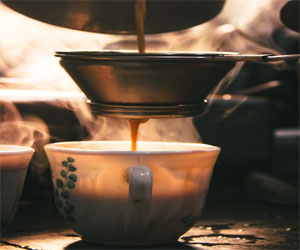 Materials:
Materials:
Wax (multiple colors for layering)
Wick
Fragrance oils (various scents)
Candle dye (multiple colors)
Heat-resistant container
Double boiler or microwave-safe bowl
Steps:
Prepare the container and wick as in the basic container candle recipe.
Melt each color of wax separately, adding specific fragrances and dyes.
Pour the first layer of wax into the container, allowing it to cool and solidify.
Repeat this process with different colors and scents, creating layered bands of wax.
Let the candle cool completely, trim the wick, and enjoy the fragrance and beautiful layers.
3. Upcycled Teacup Candle Recipe:
Materials:
Old teacup or small container
Wax
Wick
Fragrance oil (optional)
Candle dye (optional)
Double boiler or microwave-safe bowl
Steps:
Clean and dry the teacup or container.
Secure the wick at the center of the teacup.
Melt the wax and add fragrance oil and dye as desired.
Pour the melted wax into the teacup.
Let it cool and solidify.
A Journey Towards Health And Well-Being
 Safer Skincare: Personal care products, such as cosmetics and skincare items, are notorious for containing synthetic chemicals. Safer alternatives often come in the form of natural or organic products. These are made with ingredients sourced from nature, reducing the risk of skin irritation, allergies, or exposure to harmful substances.
Safer Skincare: Personal care products, such as cosmetics and skincare items, are notorious for containing synthetic chemicals. Safer alternatives often come in the form of natural or organic products. These are made with ingredients sourced from nature, reducing the risk of skin irritation, allergies, or exposure to harmful substances.
Chemical-Free Cleaning: Conventional household cleaning products often contain a mix of harsh chemicals, many of which can be harmful to both human health and the environment. Safer alternatives include natural cleaning products, such as vinegar, baking soda, and plant-based cleaners, which effectively clean without the toxic residue.
Nutrition And Food Choices: Safer alternatives extend to our diet. Organic produce, for instance, reduces exposure to pesticides and synthetic additives. Opting for whole foods over processed ones is another way to embrace a healthier approach to nutrition.
Reducing Plastic: Plastic pollution is a significant environmental issue, and it can also have adverse health effects due to the presence of microplastics in our food and water. Safer alternatives include using reusable containers and reducing plastic usage to minimize exposure.
Natural Medicine: Traditional and alternative medicine systems, like Ayurveda and Traditional Chinese Medicine, often provide safer alternatives to pharmaceutical drugs. These natural remedies focus on holistic healing and have fewer side effects.
Eco-Friendly Choices: Safer alternatives often align with eco-conscious choices. Reusable items, like cloth shopping bags and stainless steel straws, not only reduce waste but also limit exposure to potentially harmful chemicals found in disposable plastics.
A Time-Honored Craft That Endures
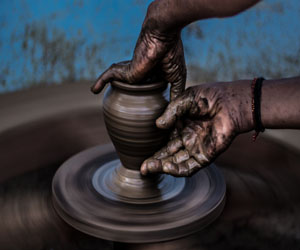 Techniques And Materials: Traditional pottery is characterized by a profound connection between the potter and the materials. Typically, it involves handbuilding techniques such as coiling, pinching, and slab-building, as well as the use of locally sourced clay and other natural materials. The techniques and materials used are often passed down through generations, preserving the authenticity and heritage of each style.
Techniques And Materials: Traditional pottery is characterized by a profound connection between the potter and the materials. Typically, it involves handbuilding techniques such as coiling, pinching, and slab-building, as well as the use of locally sourced clay and other natural materials. The techniques and materials used are often passed down through generations, preserving the authenticity and heritage of each style.
Regional Variations: One of the most compelling aspects of traditional pottery is its regional diversity. Different cultures have developed their own unique styles, forms, and designs. For example, the delicate blue and white porcelain of China is world-famous, while the intricately painted talavera ceramics of Mexico are celebrated for their vibrant patterns. Native American tribes have their distinctive pottery traditions, often incorporating symbolism and motifs reflecting their cultural heritage.
Cultural Significance: Traditional pottery is not just a craft; it is a reflection of cultural identity and history. Many traditional pottery forms have spiritual, ceremonial, or ritualistic importance within their respective cultures. In Native American Pueblo communities, for instance, pottery is often used in religious ceremonies, and the designs have deep cultural significance. In Japan, the tea ceremony is closely tied to the creation and appreciation of traditional pottery, such as the iconic Raku ware.
Preservation Of Craftsmanship: One of the most significant contributions of traditional pottery is its role in preserving craftsmanship. Potters who create traditional pottery often use age-old techniques that are passed down from master to apprentice. The continuation of these traditions ensures the perpetuation of valuable skills and techniques, safeguarding the art for future generations.